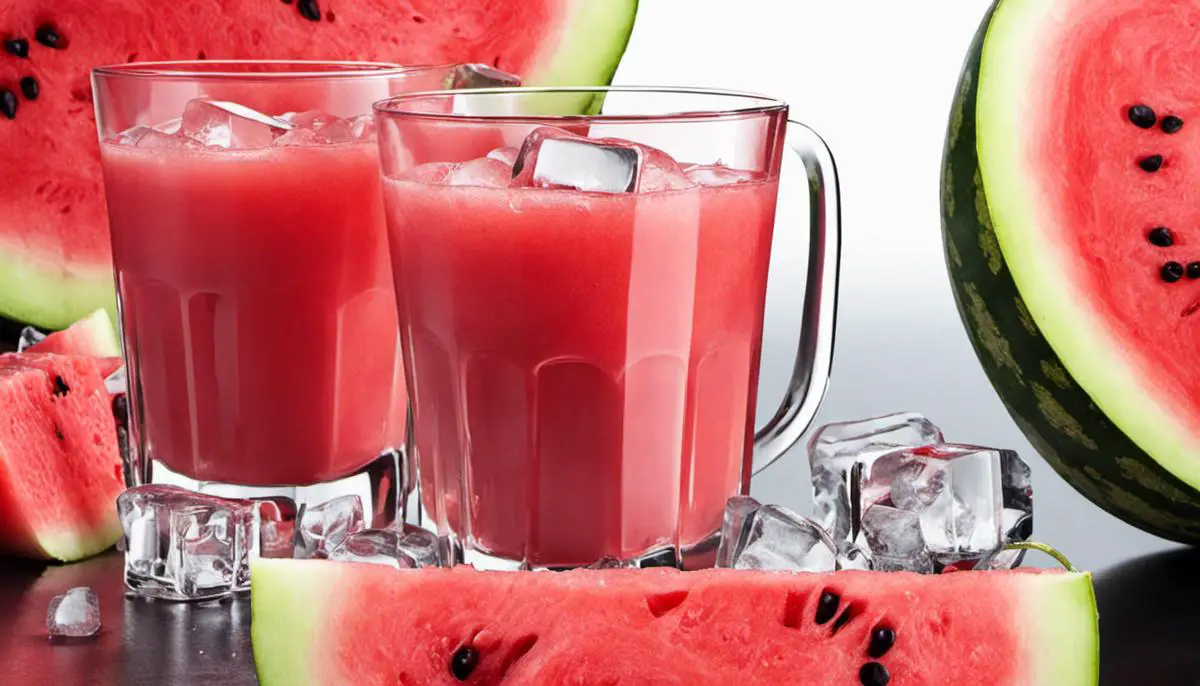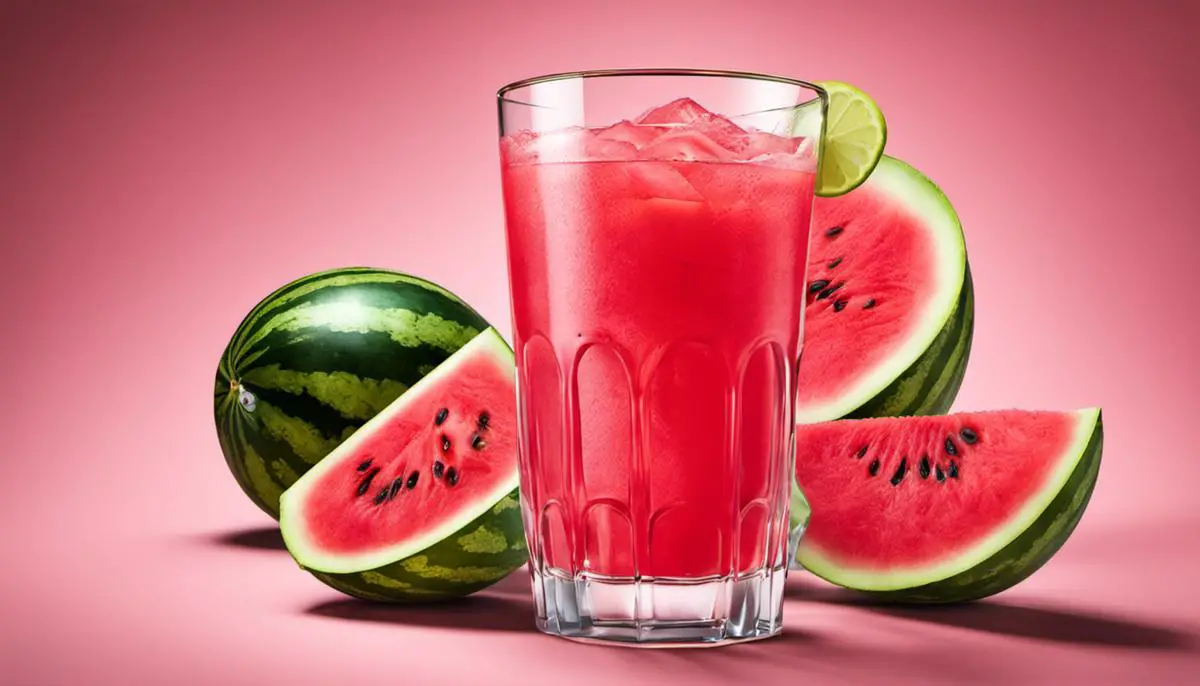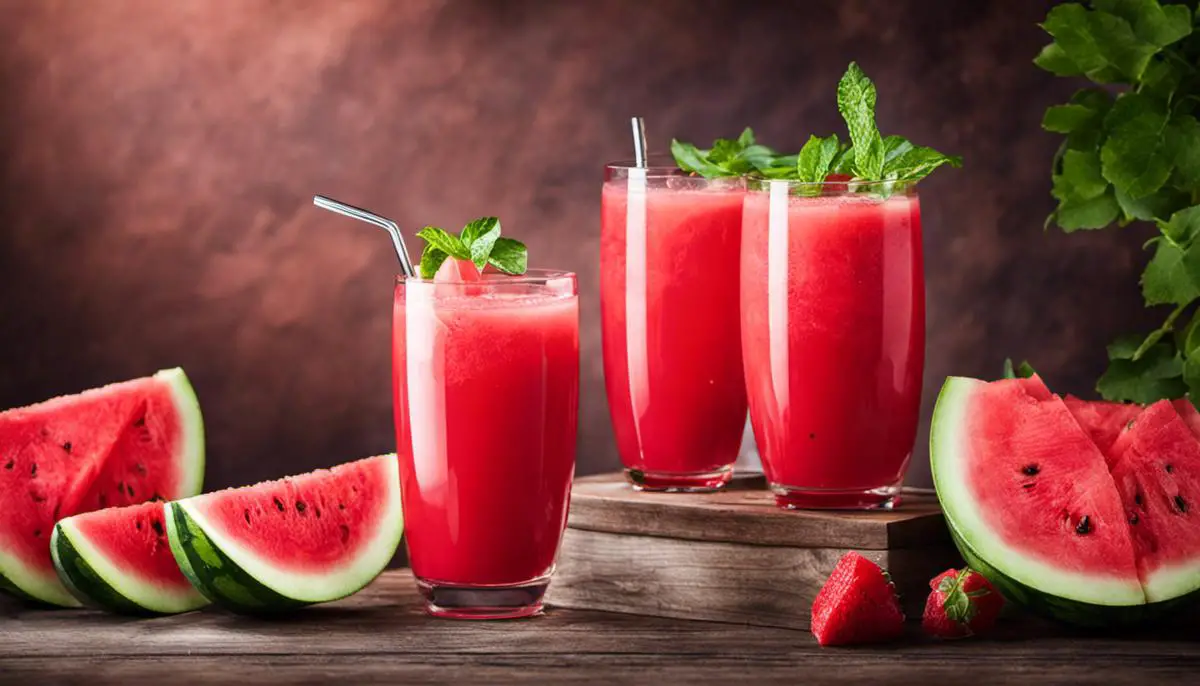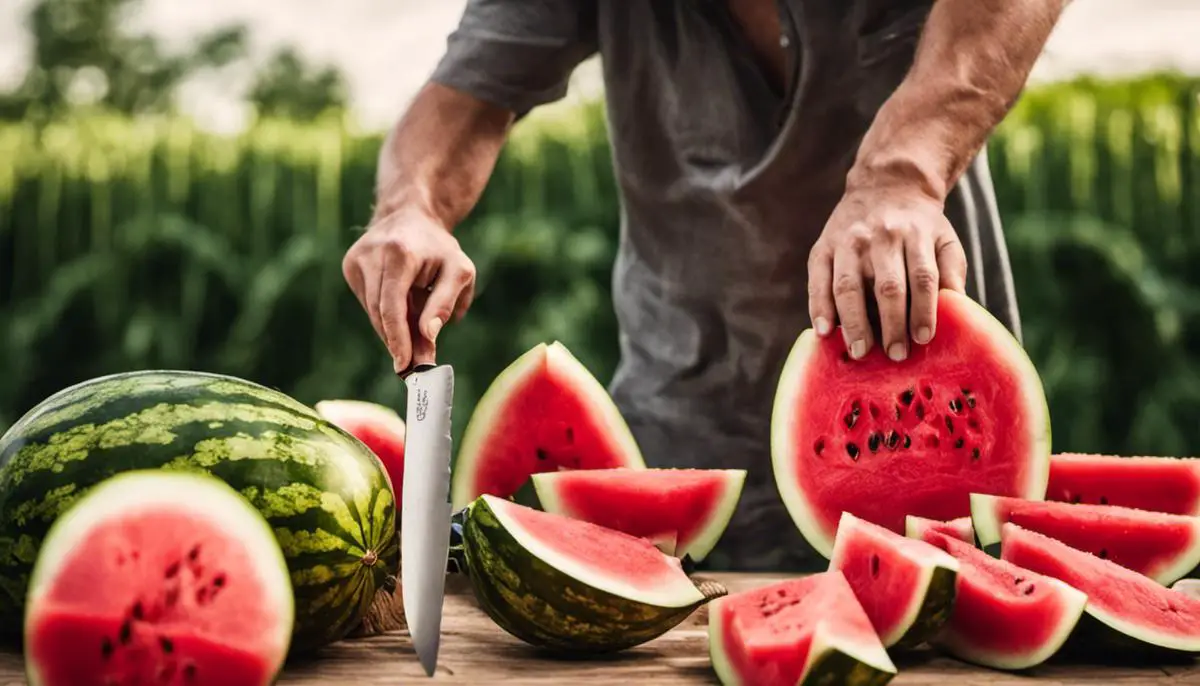Delighting in the freshness and sweetness of watermelon on a hot summer day is a pleasure enjoyed by many. However, it gets even more refreshing and revitalizing when this delightful fruit is turned into a mouth-watering juice. This particular essay explores how one can do just that, in the comfort of their own home. Starting with the most crucial step, the selection and preparation of the watermelon, the reader will be guided on how to identify a perfectly ripe watermelon that will deliver the richest flavor. This will be followed by an in-depth look at washing, cutting, and deseeding, which are essential to prevent any contamination and provide a smooth juice. Furthermore, the reader will be introduced to various techniques and tools for juicing, ranging from traditional manual methods to the use of modern appliances like juicers and blenders.
Selecting and Preparing Watermelon
Selecting the Right Watermelon
One of the things that could greatly affect the taste of your watermelon juice is how ripe your watermelon is. Here are things to consider when choosing a ripe watermelon for your juice:
- Size and weight: A ripe watermelon should feel heavy for its size. This indicates that it is full of juice, which is what you want.
- Field spot: This is the area of the watermelon that was resting on the ground while it was growing. Look for a creamy yellow spot. If it’s white or doesn’t exist, the watermelon is probably not ripe.
- Uniformity: The watermelon should be uniform in shape. Irregularities may signify that the watermelon grew unevenly, which can affect its taste and texture.
- Sound: A tap to the rind should produce a hollow sound. If the sound is dull, the fruit might be overripe or underripe.
Preparing Your Watermelon for Juicing
Once you’ve selected your watermelon, the next major steps are washing, cutting, and deseeding it.
Washing: It’s essential to wash the outer surface of the watermelon thoroughly before you start cutting, as bacteria from the skin can transfer to the knife and contaminate the fruit inside. You can simply rinse it under cold running water and scrub it gently with a clean produce brush.
Cutting: After washing, pat the watermelon dry with a towel to prevent it from slipping. Then, using a sharp knife, cut both ends of the watermelon to create flat ends. Stand the watermelon upright, and cut it in half. Then, cut each half into several slices.
Deseeding: Although watermelon seeds are generally safe to consume and can be included in the juice, the taste and consistency may not be to everyone’s liking. To deseed, take each slice of watermelon and use a small spoon or your fingers to remove the black seeds. Remember, the tiny white seeds are completely edible and will blend well in your juice.
It’s crucial to note that the Watermelon rind is juicable and contains several nutrients, but also tastes bitter. Therefore, removing the rind before juicing might be a good idea—especially if you’d prefer your watermelon juice sweet, not bitter.

Juicing Techniques
Method 1: Juicing with a Juicer
Juicing a watermelon with a juicer is one of the easiest methods. You will only need a juicer, a knife, and a large bowl.
Start by cutting your watermelon into small enough pieces to fit into your juicer. Make sure to remove the seeds as you go and discard the rind.
Once all of the watermelon has been cut, process the chunks through the juicer and collect the juice into your bowl. Once all of the juice has been collected, pour it into containers of your choice. Refrigerate before serving.
Method 2: Blending and Straining
Another method to extract watermelon juice is by using a blender and a strainer. This technique will require a blender, a strainer or cheesecloth, a knife, and a bowl.
Start by cutting the watermelon into chunks, removing the seeds, and ensuring the pieces are small enough to blend. Place the chunks into the blender, and blend until it forms a thick, smooth pulp.
Place your strainer or cheesecloth over your bowl, then pour the pulp into the strainer, allowing the juice to drain into the bowl. If the pulp appears too thick to strain, use a spoon to press it and squeeze out as much juice as possible. Pour the juice into a container and refrigerate.
Method 3: Manual Extraction
Lastl,y if you don’t have access to a juicer or blender, you can manually extract the juice. You’ll need a watermelon, a fine-mesh strainer or cheesecloth, a large bowl and a potato masher or wooden spoon.
Cut the watermelon into chunks and remove the seeds. Place the chunks into the large bowl and use your potato masher or wooden spoon to press and crush the chunks. As you crush the chunks, juice will be released. Once all the pulp has been crushed, strain the mixture through your fine-mesh strainer or cheesecloth, taking care to press and squeeze to extract as much liquid as possible. Pour the juice into a container and refrigerate until chilled.
Regardless of the method, make sure you enjoy your homemade watermelon juice within two days of extraction for the best flavor.

Juice Preservation and Enhancement
Preserving Watermelon Juice for Longer Shelf Life
Preserving watermelon juice for a longer shelf life involves refrigeration, freezing, or pasteurization. Immediate refrigeration is the standard method. Once prepared, pour the juice into a clean, air-tight container or glass bottle, leaving little to no air space, and keep it refrigerated. Make sure to consume it within 24 to 48 hours.
For a longer storage period, freezing is an option. To freeze watermelon juice, place the undiluted juice in a clean, freezer-safe container or bag, allowing some room for expansion as the liquid freezes. This could preserve your juice for up to six months. Before using, thaw in your refrigerator and stir well.
Alternatively, pasteurization could prolong the shelf life significantly. Pasteurization involves heating the juice to kill bacteria, yeasts, and molds that could spoil it. Place the juice in a pot and heat it to about 160°F, hold it at this temperature for one minute, then cool it promptly and refrigerate. This could extend the shelf life to several weeks if kept refrigerated.
Enhancing the Flavor of Watermelon Juice
Enhancing watermelon juice can be done with the addition of other fruits, spices, or herbs. Citrus fruits like lime or lemon complement watermelon well and also slow down the oxidation process. Add the juice of half a lemon or lime for every four cups of watermelon juice.
Using fresh mint leaves can also enhance your watermelon juice. Add a small handful of fresh mint leaves to the blender when processing the watermelon, adjusting to taste. This provides a refreshing and invigorating character to the juice.
For a sweet and spicy twist, try adding a pinch of cayenne pepper with a sprinkle of salt. If you prefer a sweeter juice, add a splash of agave syrup or honey. Remember, these additions are to taste, so start small and adjust accordingly.
Alternatively, you can blend other fruits like strawberries, blueberries, or peaches with the watermelon. This not only enhances the flavor but also boosts the nutritional value of your juice. Always blend fresh fruits together and strain if desired.

Enjoying fresh, homemade watermelon juice is a simple, healthy treat that can be enjoyed any time of year. However, to truly savor this vibrant treat, it’s important to pay attention to the steps discussed earlier from the selection and preparation of the watermelon to the actual procedures of juicing. Additionally, understanding ways of preserving juice and enhancing its flavor, as studied previously, can totally transform the usual juice to a gourmet experience at home. As such, anyone can relish the wholesome goodness of freshly-squeezed watermelon juice at their convenience, bearing in mind that the quality of the juice all begins with the careful selection and preparation of the fruit, divergent juicing techniques, and proper preservation and enhancement procedures.
